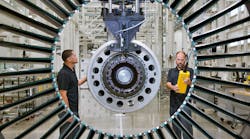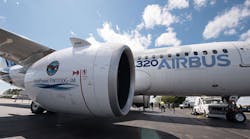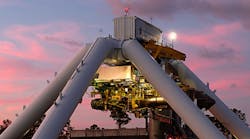Pratt & Whitney commissioned a new fan blade manufacturing plant at its AutoAir complex in Lansing, Mich., a $97-million investment that is part of a $1.3-billion organization-wide capital program. "This expansion is part of our strategy to handle delivery demands on our backlog of more than 8,000 firm and option engines on order,” according to Shane Eddy, v.p. of operations.
The project at AutoAir added a 93,000-sq.ft. of manufacturing space for blades to be installed in Pratt & Whitney’s PurePower® Geared Turbofan™ (GTF) engines. Over two years, an existing fan-blade production line was expanded in a $30-million investment, followed by acquisition of a new plant that further expanded production capacity. At full capacity, Pratt & Whitney will have tripled its fan blade output there.
The AutoAir operation likewise has nearly tripled its employment level to 696 workers.
In addition to fan blade manufacturing, AutoAir is a Pratt & Whitney “center of excellence” for test nacelle composite repairs. Also, Pratt & Whitney has four MRO facilities there for repairing and overhauling GTF engines.
The GTF series is the result of a long research-and-development program reportedly costing $10 billion. In contrast to the more common high-bypass turbofan technology, geared-turbofan engines are configured with the engine fan separated from the low-pressure compressor and turbine, so that each module operates at optimal speeds. The result is lower engine weight and greater fuel efficiency.
In addition to the other operating advantages, the PurePower GTF series reportedly will feature reduced GHG emissions than previous-generation turbofan engines, with reduced noise levels and lower operating costs.
Despite its success placing the GTF engines in various commercial-aircraft (Airbus, Bombardier, and Embraer), Pratt & Whitney has had difficulties maintaining the engines’ delivery schedules due to supply-chain disruptions and production delays.








